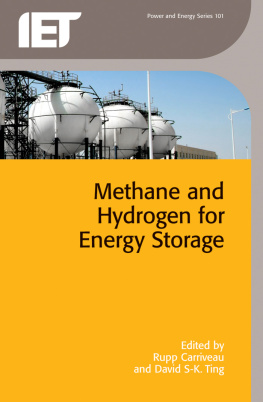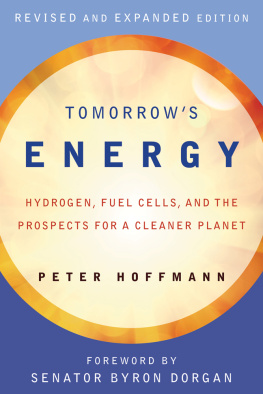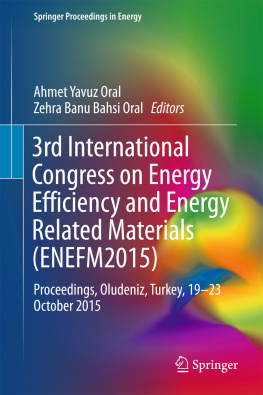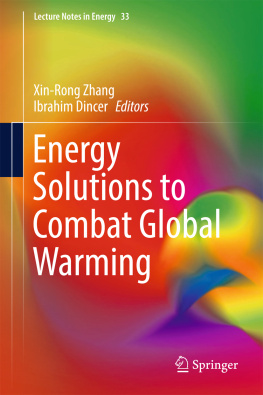Preface
Commercial energy storage has moved from the margins to the mainstream as it fosters flexibility in our smarter, increasingly integrated energy systems. The energy density, availability, and relatively clean fossil profile of natural gas ensure its critical role as a fuel for heating and electricity generation. As a transportation fuel, natural gas continues to increase its market penetration; much of this has been enabled by emerging developments in storage technology. Liquefied storage of natural gas is enabling the cleanest and quietest fleet of marine ferries and barges in history. Innovative adsorbed natural gas storage technologies are facilitating lower pressure, lower cost fuel storage for the light duty transport sector. Natural gas has been identified by many as the fuel to take us to the no-carbon horizon; where a hydrogen economy waits on development. These two actors are already connected in precursor applications as transitional solutions for hydrogen handling and transportation are sought ahead of a fully established hydrogen infrastructure. This monograph explores some of leading advances in methane and hydrogen storage as well as the interesting link between these two important elements in our evolving energy system mosaic.
The monograph commences with Hydrogen Absorption for Storage by Makridis in Chapter 1. In this chapter, absorption is considered to facilitate the potential utilization of natural gas infrastructure as a hydrogen storage and delivery mechanism. This is followed by Power-to-Gas for Energy System Integration and Storage in Chapter 2, where Walker et al. detail the use of surplus electricity from multiple sources to generate hydrogen gas that would also be injected into the natural gas infrastructure. These two chapters highlight some of the critical links that can be made between hydrogen and natural gas to help drive a more realistic march to a carbon-free economy.
Converting carbon dioxide back into methane can present a double benefit, as it captures undesirable emissions and converts them into useful fuel. On this, Kolb et al. tackle the challenge of the relatively low efficiency of conventional methanation with the latest technologies from a comprehensive analysis of the literature in Chapter 3. It is with minimal modification that hydrogen can be injected into natural gas infrastructure at low concentrations. This enablement builds great potential for storage of gas produced by surplus electricity. The volumes and time independency of such storage is attractive for energy utilities. This is echoed by Abanades in Chapter 4, Production of Hydrogen from Methane Decarbonization into Power-to-Gas Scenarios.
To have a viable Power-to-Gas system in practice, stakeholders at both the supply and demand ends have to work together. The flow of power must be carefully regulated in the time and manner of its delivery. In Chapter 5, Mukherjee et al. carry out a simple techno-economic feasibility study of a Power-to-Gas energy hub that offers said load regulation capabilities in what is termed the ancillary services market.
To overcome the high pressure required in traditional compressed natural gas (CNG) storage, Adsorption of Natural Gas (ANG) in Metal-Organic Frameworks (MOFs) has been revealed as a promising alternative. Storage pressures are up to seven times less than those required by CNG. Such pressure reductions can lower the costs of compression and increase flexibility for storage container designs. Makal delineates how MOFs high surface areas and chemically-tunable structures have made them prominent sorbent materials for enhancing the natural gas storage capacity of on-board vehicular fuel systems in Chapter 6.
Recently, conformable storage ANG tanks have been proposed to better utilize the limited space on vehicles. To make ANG competitive, further improvement in the high-performance sorbents like MOFs is needed. As importantly, proper thermal management is a must when it comes to reasonably short refueling times. This is unveiled thermodynamically in Chapter 7 by Ahmadi-Baloutaki et al.
Where would one harvest for clean methane years from now? From the large amount of gas hydrates naturally stored under our feet, according to Goyal et al. in Chapter 8. The naturally occurring gas hydrates contain a large amount of methane per molecule of hydrate. This is not lost on countries like the United States, India, and China that are committing significant levels of research investment to find feasible ways to economically crop and harvest methane from these hydrates.
Rupp Carriveau & David S-K. Ting
Other volumes in this series:
Volume 1 | Power Circuit Breaker Theory and Design C.H. Flurscheim (Editor) |
Volume 4 | Industrial Microwave Heating A.C. Metaxas and R.J. Meredith |
Volume 7 | Insulators for High Voltages J.S.T. Looms |
Volume 8 | Variable Frequency AC Motor Drive Systems D. Finney |
Volume 10 | SF6 Switchgear H.M. Ryan and G.R. Jones |
Volume 11 | Conduction and Induction Heating E.J. Davies |
Volume 13 | Statistical Techniques for High Voltage Engineering W. Hauschild and W. Mosch |
Volume 14 | Uninterruptible Power Supplies J. Platts and J.D. St Aubyn (Editors) |
Volume 15 | Digital Protection for Power Systems A.T. Johns and S.K. Salman |
Volume 16 | Electricity Economics and Planning T.W. Berrie |
Volume 18 | Vacuum Switchgear A. Greenwood |
Volume 19 | Electrical Safety: a guide to causes and prevention of hazards J. Maxwell Adams |
Volume 21 | Electricity Distribution Network Design, 2nd Edition E. Lakervi and E.J. Holmes |
Volume 22 | Artificial Intelligence Techniques in Power Systems K. Warwick, A.O. Ekwue and R. Aggarwal (Editors) |
Volume 24 | Power System Commissioning and Maintenance Practice K. Harker |
Volume 25 | Engineers Handbook of Industrial Microwave Heating R.J. Meredith |
Volume 26 | Small Electric Motors H. Moczala et al. |
Volume 27 | AC-DC Power System Analysis J. Arrillaga and B.C. Smith |
Volume 29 | High Voltage Direct Current Transmission, 2nd Edition J. Arrillaga |
Volume 30 | Flexible AC Transmission Systems (FACTS) Y-H. Song (Editor) |
Volume 31 | Embedded generation N. Jenkins et al. |
Volume 32 | High Voltage Engineering and Testing, 2nd Edition H.M. Ryan (Editor) |
Volume 33 | Overvoltage Protection of Low-Voltage Systems, Revised Edition P. Hasse |
Volume 36 | Voltage Quality in Electrical Power Systems J. Schlabbach et al. |
Volume 37 | Electrical Steels for Rotating Machines P. Beckley |
Volume 38 | The Electric Car: Development and future of battery, hybrid and fuel-cell cars |










